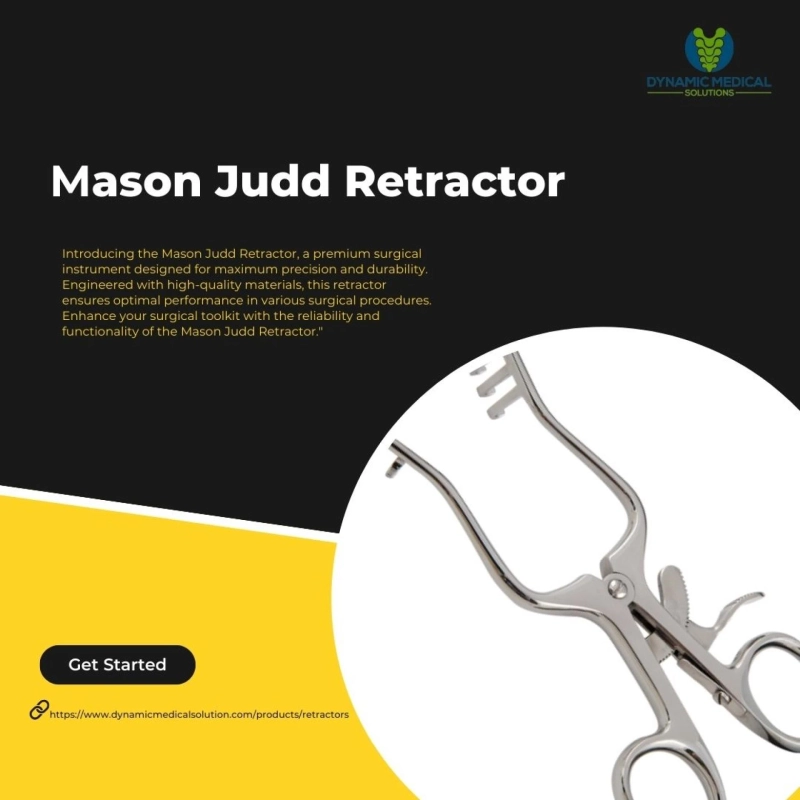Introduction to Surgical Retractors
In the realm of surgery, retractors are indispensable instruments. They play a critical role in holding back tissues and organs, thereby providing surgeons with the essential visibility and access needed to perform intricate procedures effectively. Among the diverse types of retractors, the Mason Judd Retractor is highly esteemed for its specialized design and application. This article delves into the scope of various retractors, with a particular focus on the Mason Judd Retractor, including its specific variant, the Mason Judd Bladder Retractor.
Types of Surgical Retractors
Surgical retractors are classified based on their functionality and application. The primary categories include:
Hand-Held Retractors
Hand-held retractors require manual operation by the surgical team. These instruments are versatile and can be adapted for various surgical procedures. Common examples include the Deaver retractor, used in abdominal surgeries, and the Army-Navy retractor, which is versatile for different surgical contexts.
Self-Retaining Retractors
Self-retaining retractors are equipped with a locking mechanism that allows them to remain in place without continuous manual support. This feature is particularly beneficial in lengthy surgeries as it frees up the hands of the surgical team. Examples include the Balfour retractor, commonly used in abdominal surgeries, and the Gelpi retractor, frequently used in orthopedic procedures.
Wire Retractors
Wire retractors are lightweight and flexible, making them suitable for delicate surgeries where minimal tissue damage is paramount. They are often employed in neurosurgical and cardiovascular procedures due to their precision and adaptability.
Blunt vs. Sharp Retractors
Blunt retractors are designed to gently push aside tissues without causing damage, making them ideal for procedures that require careful manipulation of soft tissues. Sharp retractors, on the other hand, can incise tissues and are used when a more aggressive approach is necessary. Examples include the Richardson retractor (blunt) and the Hohmann retractor (sharp).
The Mason Judd Retractor
The Mason Judd Retractor stands out due to its specialized design and unique applications, particularly in urological and gynecological surgeries. This retractor is meticulously crafted to provide optimal visibility and access while minimizing tissue trauma.
Mason Judd Bladder Retractor
The Mason Judd Bladder Retractor is specifically designed for bladder surgeries. Its construction allows for precise and gentle retraction of the bladder, ensuring a clear surgical field and minimizing tissue damage. This retractor is particularly valuable in procedures such as cystectomies, bladder repairs, and other urological surgeries.
Advantages of Using the Mason Judd Retractor
- Enhanced Visibility: The Mason Judd Retractor offers superior visibility of the operative site, enabling surgeons to perform procedures with greater accuracy and confidence.
- Tissue Preservation: Its innovative design minimizes tissue trauma, reducing the risk of postoperative complications and promoting faster recovery.
- Versatility: Although primarily noted for bladder surgeries, the Mason Judd Retractor can be adapted for use in other procedures requiring delicate tissue handling and precise retraction.
- Ergonomic Design: The ergonomic construction of the Mason Judd Retractor ensures ease of handling, reducing fatigue and enhancing surgical efficiency.
Conclusion
Retractors are fundamental instruments in surgical practice, providing the necessary exposure and access to the operative site. The Mason Judd Retractor, particularly the Mason Judd Bladder Retractor, exemplifies the innovation and specialization inherent in modern surgical tools. Their design and functionality render them indispensable in urological and related surgeries, emphasizing the importance of selecting the appropriate retractor for each specific surgical need. As surgical techniques advance, instruments like the Mason Judd Retractor will continue to be pivotal in achieving optimal surgical outcomes. For more details visit our website Dynamic medical.


